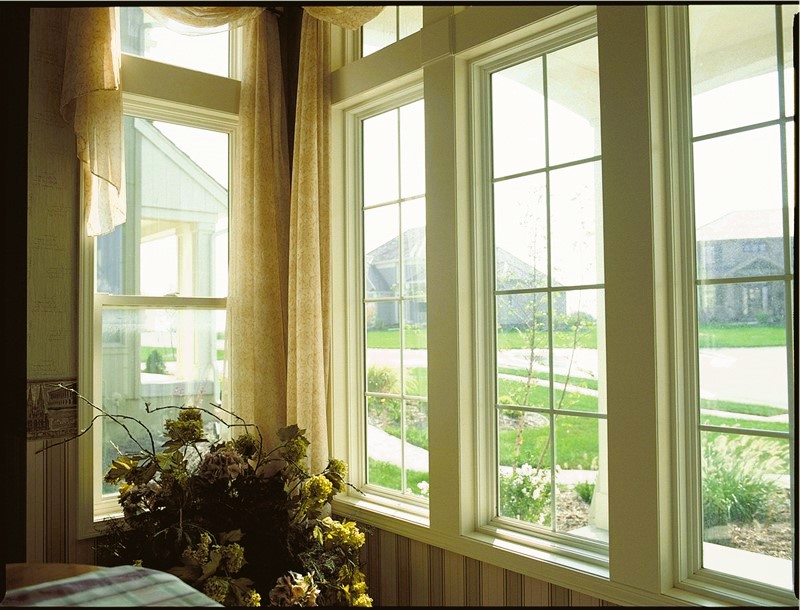As homeowners become increasingly conscious of energy efficiency and its impact on both the environment and their wallets, upgrading windows has emerged as a key strategy for improving a home’s energy performance. Windows are more than just architectural elements; they play a vital role in regulating heat transfer, air leakage, and natural light. In this comprehensive guide, we will explore various window upgrades and technologies that can significantly enhance your home’s energy efficiency.
Understanding the Importance of Energy-Efficient Windows
Energy-efficient windows are designed to minimize heat loss in winter and prevent excessive heat gain in summer. They achieve this through advanced materials and technologies that provide insulation, reduce air infiltration, and harness the benefits of natural light. Here’s why energy-efficient windows matter:
- Reduced Energy Consumption: Energy-efficient windows can substantially lower heating and cooling costs, leading to significant long-term savings on utility bills.
- Environmental Impact: By conserving energy, these windows help reduce greenhouse gas emissions and mitigate the environmental impact of residential energy use.
- Enhanced Comfort: Properly insulated windows contribute to a more comfortable indoor environment by maintaining consistent temperatures and reducing drafts.
- Natural Light: Energy-efficient windows are designed to maximize natural light while minimizing heat gain, allowing you to enjoy well-lit spaces without excessive heat.
Window Upgrades for Energy Efficiency

- Low-E Coatings:
- How They Work: Low-emissivity (Low-E) coatings are thin, virtually invisible layers applied to window glass. They reduce heat transfer by reflecting infrared radiation, thus keeping indoor spaces cooler in summer and warmer in winter.
- Benefits: Low-E coatings provide excellent insulation without compromising visible light transmission. They also protect furniture and fabrics from UV damage.
- Common Applications: Low-E coatings are commonly used in double and triple-pane windows.
- Gas Fills:
- How They Work: Inert gases like argon or krypton are filled between the panes of double or triple-pane windows. These gases have higher insulating properties than air, reducing heat transfer.
- Benefits: Gas fills enhance the thermal performance of windows, reducing heat loss and improving energy efficiency. How to find a great realtor? Read our article at this link.
- Common Applications: Gas-filled windows are used in various residential and commercial applications.
- Triple-Pane Windows:
- How They Work: Triple-pane windows consist of three layers of glass with two insulating spaces filled with gas. They provide superior insulation and energy efficiency.
- Benefits: Triple-pane windows are highly effective at reducing heat loss and outside noise. They are ideal for cold climates.
- Common Applications: Triple-pane windows are often used in new construction and energy-efficient retrofits.
- Warm Edge Spacers:
- How They Work: Warm edge spacers replace traditional metal spacers between the glass panes. They reduce heat transfer at the window’s edges.
- Benefits: Warm edge spacers enhance the overall insulation of windows, reducing condensation and improving energy efficiency.
- Common Applications: These spacers are found in modern double and triple-pane windows.
- Frame Materials:
- How They Work: Window frames made of materials like vinyl, fiberglass, or wood composites offer better insulation than traditional aluminum frames.
- Benefits: Insulated frame materials reduce thermal bridging and improve overall window energy efficiency.
- Common Applications: These frame materials are commonly used in energy-efficient window designs. Link to Wikipedia – Energy Efficiency
- Smart Window Technology:
- How They Work: Smart windows can electronically control the amount of light and heat that enters a space. Some use electrochromic or thermochromic technology to dynamically adjust tint and transparency.
- Benefits: Smart windows maximize natural light while minimizing heat gain, providing both energy efficiency and comfort.
- Common Applications: Smart windows are used in energy-efficient buildings and homes seeking advanced climate control.
- Sealed Window Units:
- How They Work: Sealed window units consist of multiple layers of glass sealed together to create an insulated assembly. They can replace existing window panes or be integrated into new frames.
- Benefits: Sealed window units are a cost-effective way to upgrade existing windows, improving insulation and energy efficiency.
- Common Applications: Retrofitting existing windows with sealed units is a popular energy-efficient upgrade.
Choosing the Right Window Upgrades
Selecting the most suitable window upgrades for your home depends on factors such as your climate, budget, and existing windows. A professional energy audit or consultation with a window specialist can help you identify the most effective upgrades for your specific needs. Remember that while energy-efficient windows may involve an initial investment, the long-term savings and comfort they provide make them a wise choice for homeowners looking to improve their energy efficiency and reduce their environmental footprint.

